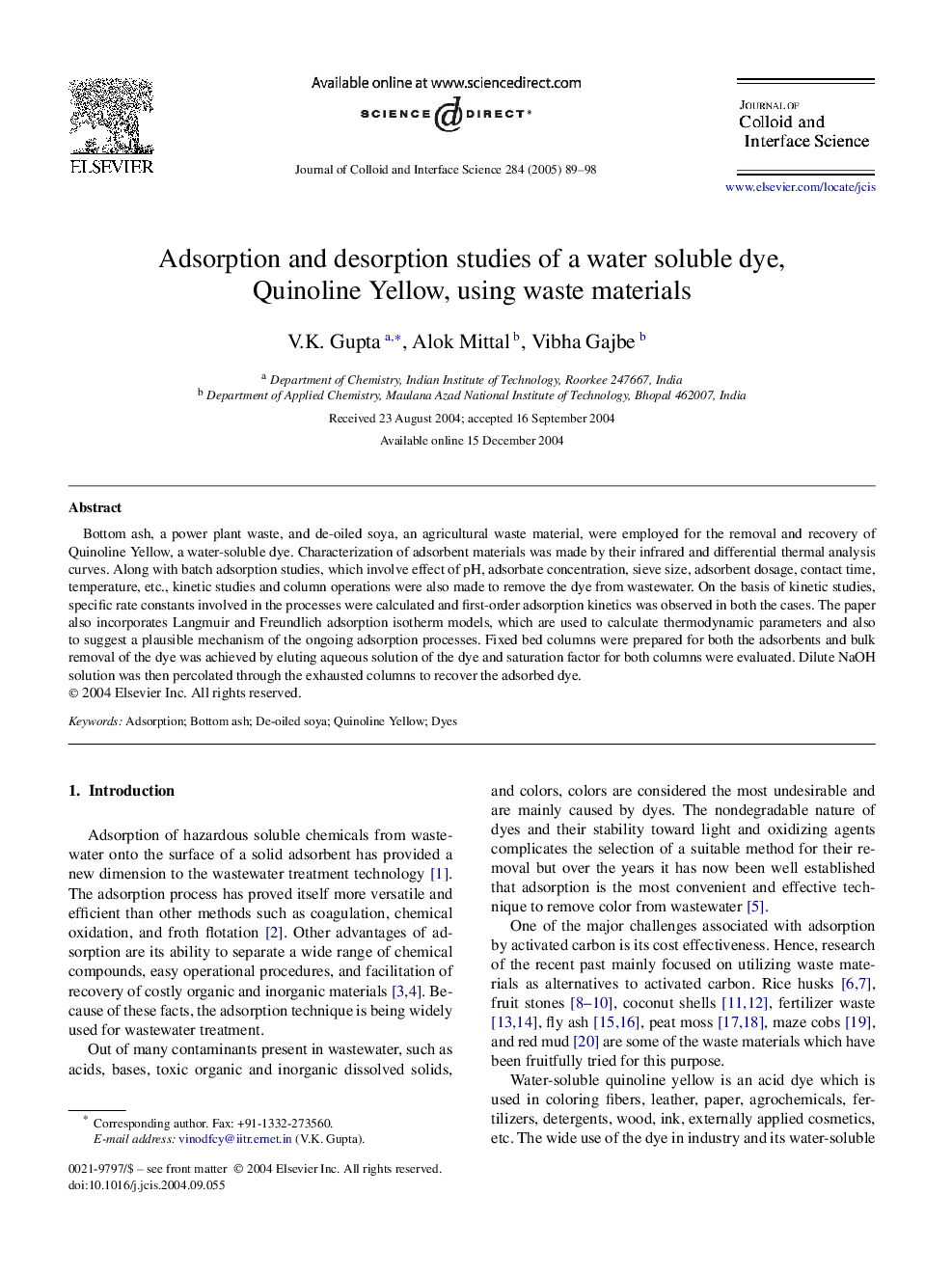| Article ID | Journal | Published Year | Pages | File Type |
|---|---|---|---|---|
| 10378146 | Journal of Colloid and Interface Science | 2005 | 10 Pages |
Abstract
Bottom ash, a power plant waste, and de-oiled soya, an agricultural waste material, were employed for the removal and recovery of Quinoline Yellow, a water-soluble dye. Characterization of adsorbent materials was made by their infrared and differential thermal analysis curves. Along with batch adsorption studies, which involve effect of pH, adsorbate concentration, sieve size, adsorbent dosage, contact time, temperature, etc., kinetic studies and column operations were also made to remove the dye from wastewater. On the basis of kinetic studies, specific rate constants involved in the processes were calculated and first-order adsorption kinetics was observed in both the cases. The paper also incorporates Langmuir and Freundlich adsorption isotherm models, which are used to calculate thermodynamic parameters and also to suggest a plausible mechanism of the ongoing adsorption processes. Fixed bed columns were prepared for both the adsorbents and bulk removal of the dye was achieved by eluting aqueous solution of the dye and saturation factor for both columns were evaluated. Dilute NaOH solution was then percolated through the exhausted columns to recover the adsorbed dye.
Related Topics
Physical Sciences and Engineering
Chemical Engineering
Colloid and Surface Chemistry
Authors
V.K. Gupta, Alok Mittal, Vibha Gajbe,
